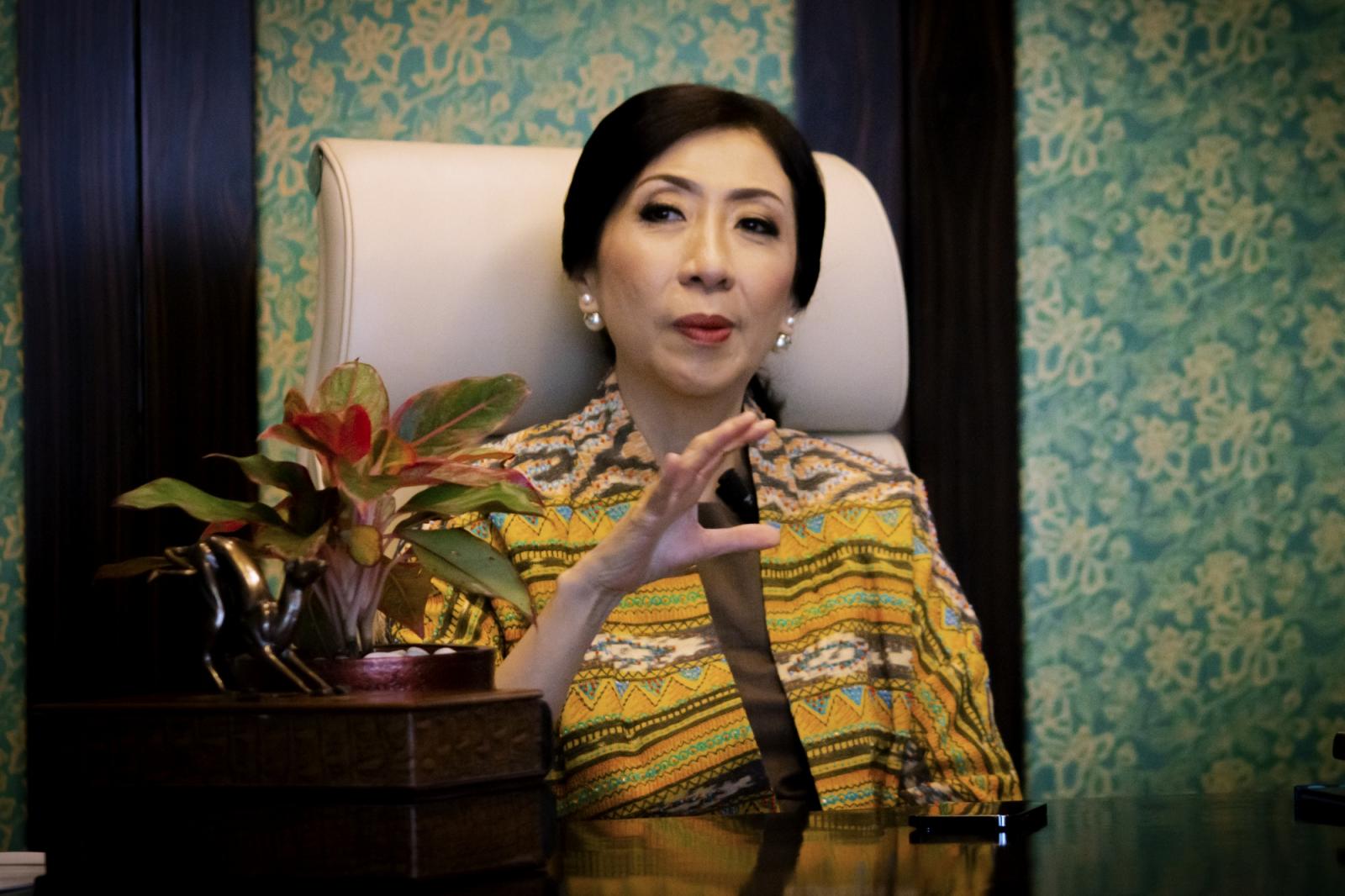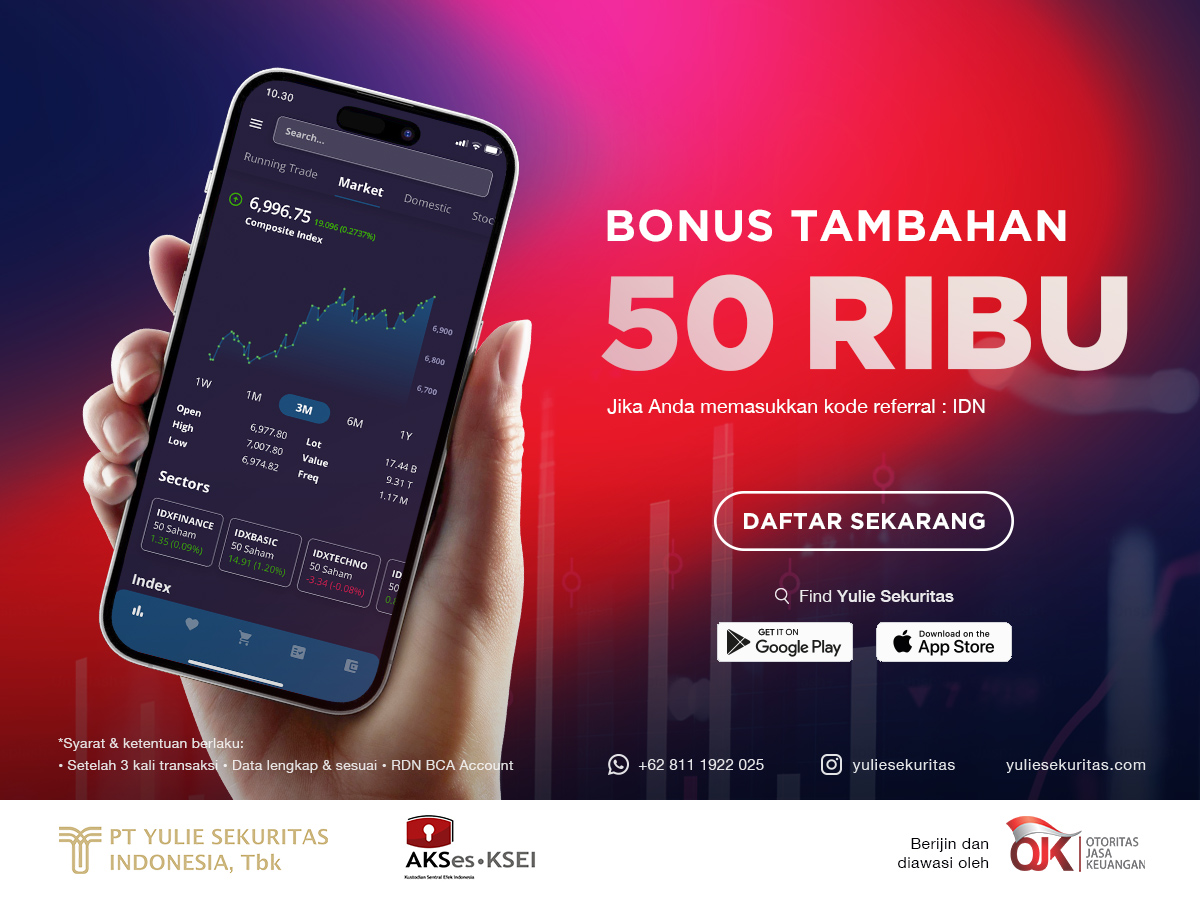BCA confident EV financing to reach IDR 1 trillion by year-end

JAKARTA – In previous edition, Vera Eve Lim, Chief Financials Officer (CFO) of PT Bank Central Asia Tbk (BBCA), mentioned that the sustainable credit distribution of BCA reached IDR 181 trillion in the first half of 2023. This financing performance is in accordance with the government’s program to attain net zero emission in 2060. This news below contains the second and final part of the exclusive interview conducted last week (3/8).
Which areas received the most of BCA’s sustainable financing distribution?
In terms of their headquarters, they are mostly in Jakarta, but their business, their factories are everywhere. Let’s say, the plantation sector may be spread across Sumatera and Kalimantan. For example, in the CPO sector, 68% of our debtors have been certifies. It is quite a sharp upturn compared to 5 years ago. This is an encouragement. I believe we need a little more time. We do not expect to reach 100%, as these debtors manage different businesses, some of them only focus on domestic market. The certification does not need to reach RSPO (Roundtable on Sustainable Palm Oil,red) for Europe standard. Some of them attain ISPO (Indonesia Sustainibility Palm Oil,red), and others.
The business sector that we fund has reached 68%, which has been impressive, as 70% of them have certified portfolio. We hope it will continue to increase, and for new financing, it will become one of the requirements. We already have five sectors that fall under high-risk category. According to the Financial Authority Services, there are 12 high-risk sectors. Out of those 12, we have upgraded the credit policy of the five of them so the policy falls in line. The sustainable financing in the plantation sector dominates, followed by transportation and cement.
In this first half, we launch, firstly, the scheme of Sustainable Loan Link (SLL). In the first half, its portfolio reached IDR 200 billion. It will rise as banks are ready to grant funding. Once the SLL is established, banks will be prepared to fund. Last year, we have yet to have a talk regarding this product.
What about sustainable financing for electric vehicle (EV) and micro hydropower plants?
The total financing for electric vehicle (EV) used to reach only IDR 17 billion. In this first half, the credit for said business now reached almost IDR 800 billion. This financing has gained appeal, and based on our expo, the consumers’ interest in EV is quite massive. The options are still limited, but it is just an example for the EV sector. I believe, by the end of this year, it will be nearing IDR 1 trillion.
What is BCA’s strategy to improve credit?
Our credit for the first semester grew 9%. In corporate segment, if we saw corporate segment-by-segment, it grew approximately below the target, at 5.4%-ish. However, other sectors, such as MSME, grew 15.5%, House Ownership Credit grew 12%, Vehicle Ownership Credit grew 19%, credit card grew 15%. We saw these sectors have increased way above 12%.
Our guidance this year is for BCA’s total credit to grow within the range of 10%-12%. However, the growth should be visible in BCA within the past 18 months. We do not only focus in corporates, but retail loans, consumer loans, and MSME will be pushed to grow massively. Regarding House Ownership Credit and Vehicle Ownership Credit, the new financing in the second quarter of Vehicle Ownership Credit posted high record. Vehicle Ownership Credit itself, compared to last year, its new financing grew over 30%.
We can see that post-pandemic, the economic recovery is astounding for Indonesia, and the pent-up demand, especially for sectors like Vehicle Ownership Credit and House Ownership Credit, soars high. Therefore, our corporate target is similar, reaching 10%-12%. This year, we expect it to improve in the second half.
One thing that is also interesting is how environment investment credit grew 12% year-on-year (yoy), whereas the working capital grew a little less than 6% yoy. Investment credit is a good sign. After the pandemic, investment credit could increase 12% yoy, and sectors in this investment credit also increase. I personally think that it would do wonder to our economy. Credits for MSME reached IDR 105 trillion, growing 15.5%.
The interest and sharia expenses increase to IDR 5.60 trillion in the first half of 2023 from IDR 3.96 trillion in the first half of 2022. Is this increase resulted from increased third-party funds?
Actually, the increased interest is for deposits. We, in fact, increased the interest for deposits earlier this year by twofold, considering that currently, the Bank Indonesia (BI) reference rate has grown rapidly, from 3.5% to the rate today; it is a quite massive gap. Thus, the gap between the deposits’ interest with other investment instruments will be put into consideration, as well. In other words, it is for the sake of our users, too.
Therefore, we raised the deposits’ interest earlier this year. The increased interest expenses are mostly due to this, but it will also affect the cost of fund, as the savings (CASA) are 81% of total funding. The deposits cover 19%. The effect of increased cost of fund is not extensive, approximately 10 basis points (bps).
Until the end of this year, how is the increase in BCA’s financial expenses?
Our projection is that the increased interest of the Fed will rise to 25 bps at most by the end of this year. For the interest, the rate will be sustained at 25 bps; even some of them expects decreased interests. I think that there are no room for the increased cost of fund. I believe the increase in cost of fund will be the same as today.
The end. (LK/ZH)

